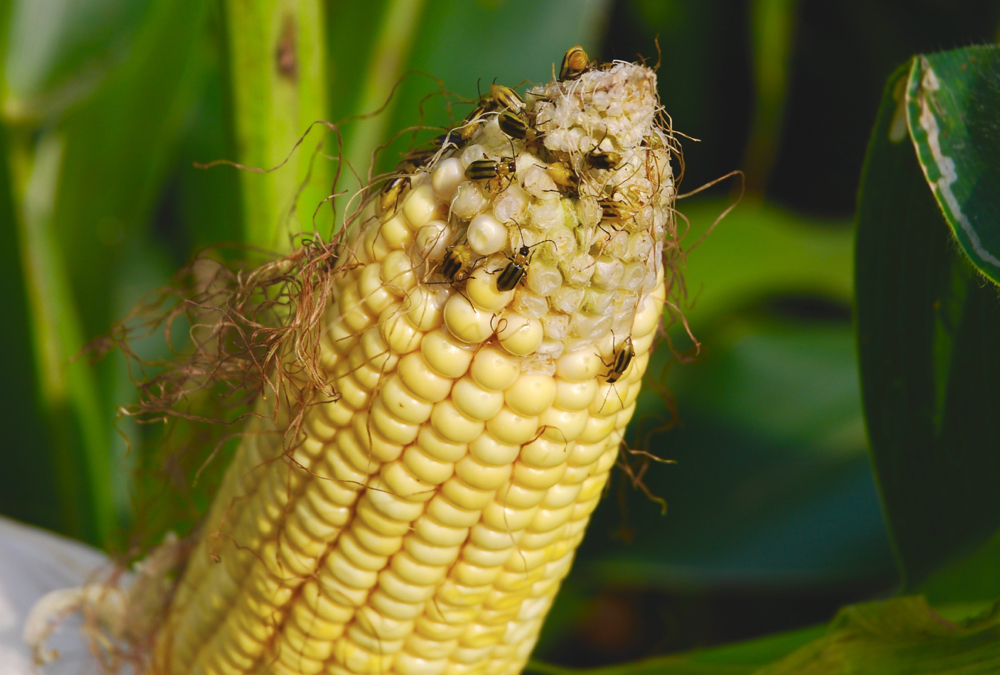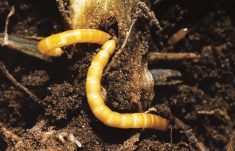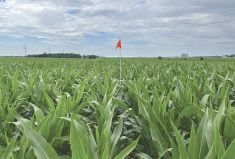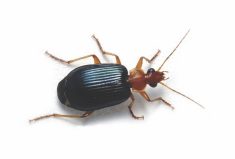For a large percentage of growers in Eastern Canada, corn production isn’t just one crop in the rotation, it’s the main crop in that rotation. For others — mostly livestock producers — it’s the only crop.
That dominance is creating concerns as the incidence of resistance of corn rootworm becomes a more-pressing issue. Even so, agronomists of all stripes are toning down some of their most alarmist thinking, and focusing instead on insights and recommendations.
Why might they be alarmist? The big concern centres on farms with continuous corn and the threat of a perfect storm that’s been growing in the past 10 years. In recent decades, it’s mostly been livestock producers who opt for continuous corn, saying they need to feed their dairy cows or hogs on a limited land base.
Read Also

Producers aren’t panicking over tariffs and trade threats
The influence of tariff and trade uncertainity on farm business decisions.
Now, however, we’re seeing a number of cash croppers abandon longer rotations and instead adopt crop plans that favour corn-on-corn or continuous corn.
The reasons for the switch aren’t what many are questioning. It’s what might come next if it continues to get worse.
Corn rootworm has managed to break many of the resistance traits incorporated into hybrids, including pyramided technologies. Unlike the resilience of the high-dose Cry proteins used in Bt traits in the past 25 years, the pyramid of traits containing two Bt proteins for rootworm was not based on as strong a lineup of Cry proteins.
“They were low- to moderate-dose at best and they came out as single traits first,” says Tracey Baute, field crops entomologist with the Ontario Ministry of Agriculture, Food and Rural Affairs (OMAFRA). “They’re so closely related that once the population is introduced to one trait and they become tolerant to it, they’re able to overcome at least three of the four Cry proteins. Even when they pyramid those, they’re no longer pyramids: if only one of the Crys works, it’s a single trait again or it speeds up resistance to that trait, too.”
Baute, along with Dr. Jocelyn Smith of the University of Guelph’s Ridgetown Campus, scouted fields across parts of Ontario in 2020, finding resistant root- worm populations, mainly in corn-on-corn or continuous corn situations. Although she doesn’t want to raise alarms, Baute states what she saw in her field tours was similar to what happened in the U.S. in 2013, where states with corn rootworm started to see cross-resistance and widespread failure of products. The difference for Ontario growers is that there’s a chance to break the cycle and keep resistant populations low enough that pyramid-traited hybrids can be used when needed.
Baute emphasizes that shifting to another pyramid hybrid isn’t going to help; it will actually speed the region towards complete failures. She cites one dairy producer who saw their silage yields cut in half in 2020 because of rootworm damage on a pyramid hybrid.
What’s needed now is a break in the cycle, and not just in areas with incidences of livestock or a high reliance on corn-on-corn plans. She won’t isolate the issue to one region of the province versus another because she doesn’t want growers to think those areas are the only ones at risk. Some growers may not realize they have this problem or understand that it can be shared among neighbours.
“Any region that has had three-plus years of corn, we’ve allowed rootworm to build up there,” adds Baute. “Those areas also had a tendency to be constantly using rootworm-Bt hybrids because it’s an easy way of managing rootworm, but it’s not sound practice, and that’s why we’re in the position we are now. This is our chance to at least have everyone in the continuous corn practice take measures now before the rootworm issue really is a problem.”

For producers, it means taking a proactive approach of maintaining as much of their feed production as possible, even though it will mean shifting out of corn short-term. But it will also require opting out of corn once every four years long-term, just to keep this from happening.
Also, don’t assume that a high-rate insecticide or soil-applied product will do the job. Baute downplays that approach because it only protects the crop without actually reducing the rootworm population. Further down the road, the insecticide route will do nothing to break the cycle, and the rootworm will eventually develop resistance to those products.
The approach she has advocated on social media (Figure 1) depicts the damage that can occur in years three and four of a continuous corn cycle. But growing a non-corn crop like wheat in year four can break the rootworm cycle and reduce the risk of increasing resistance. It means growers would have to rely on Bt-rootworm hybrids for only one in four years.
Turning over every leaf
Operating within Huron and Perth counties — strong dairy and hog producers in Ontario — Steph Berlett accompanied Baute and Smith on some of their field scouting tours in 2020. She echoes much of what Baute mentions, noting that in some cases in her area, growers have had 10 to 20 or more years of continuous corn in their fields. She acknowledges dairy producers will be challenged by the prospect of cutting corn acres for a year or two to break the corn rootworm cycle, yet such a strategy has become a necessity for many. Silage can’t be trucked any great distance and there are definitely issues with matching feed value and tonnage — although western Canadian producers manage with cereals, for the most part. And time — and tonnage in some fields — may be running out.
“There are reports of silage yields being knocked back from 18 to 20 tonnes per acre to 10 or 11 this year in Perth County as a result of rootworm damage,” says Berlett, a certified crop advisor (CCA) with Brussels Agromart Ltd. Those figures coincide with Baute’s example. “Hog producers have less of a problem because they have more options for buying corn or swapping land. Dairy producers’ hands are going to be tied with fewer options to keeping silage close to the bunk or the silo.”
For dairy and hog producers, the need to work with their feed supplier and find that alternative crop is what Berlett refers to as “the ultimate conundrum.” Corn silage is the optimum feed source and replacing the quantity and quality is the key to profitability for most operations. Some sources have talked about sorghum Sudan grass or sugar beets as an option. But the issue is that technology has allowed continuous corn for more than a decade.
“These traits have made that an option,” says Berlett. “It was a bonus that we’d been able to do that, most times without a yield drag. But that’s all it was — a bonus. It’s time to start looking harder at rotation. There are strong crop prices to help justify switching to non-corn crops, but the need for feed is going to be the issue.”
Berlett also notes there are new hybrids in the research and development pipeline, but there may be questions about export approval. What will global partners allow?
“Our immediate advice to growers is that we cannot wait for new hybrids or traits to solve this problem,” Berlett says. “We certainly need to be aware of the long-term implications of resistant rootworm populations in Ontario.”
The times is now
Despite the reputation growers in extreme southwestern Ontario have for growing corn, the incidence of continuous corn or corn-on-corn in Essex or Kent counties is not as high as in the dairy or hog-producing regions. Yet talk of breaking the cycle on corn rootworm resistance is a high priority for Stephen Denys, brand director with Maizex Seeds. Like Berlett and Baute, he wants to refrain from sounding alarms, opting instead for informing growers of the fact that resistance is becoming a problem and that there’s time to manage it through good stewardship practices.
“The issue right now is isolated to some degree, but when you look at federal government-generated maps of where corn-on-corn is produced, this becomes more of a provincial opportunity to discuss stewardship practices,” says Denys. “We always knew we had sustained pockets in dairy country in western Ontario, but there is long-term corn- on-corn in southwestern and eastern Ontario as well, where this issue needs to be discussed.”
Denys cites findings from an industry coalition working on corn rootworm resistance, which has clearly stated that it goes across all traits: rotating one corn rootworm trait for another in successive years is not a solution and leads to cross-resistance.
“In terms of timing to manage the risk of moving our entire population of rootworms to the resistant category, the time is now,” Denys says. “The rootworm trait technology we have is what we will have — in the next few years, we will see new trait introductions including those based on RNAi (ribonucleic acid interruption) technologies, but this is at least two years away. At that point, we need to remember that these technologies will require the same stewardship practices being advocated today to ensure their viability long into the future.”
Adds Denys, “This will be tackled differently in different areas based on what’s grown in the rotation or what crops are needed. There needs to be a great deal of education on what the risks are right now for long-term corn-on-corn and the reliance on corn rootworm traits as the answer — in all parts of the province.”
This article was originally published in the January 2021 issue of the Corn Guide.
















